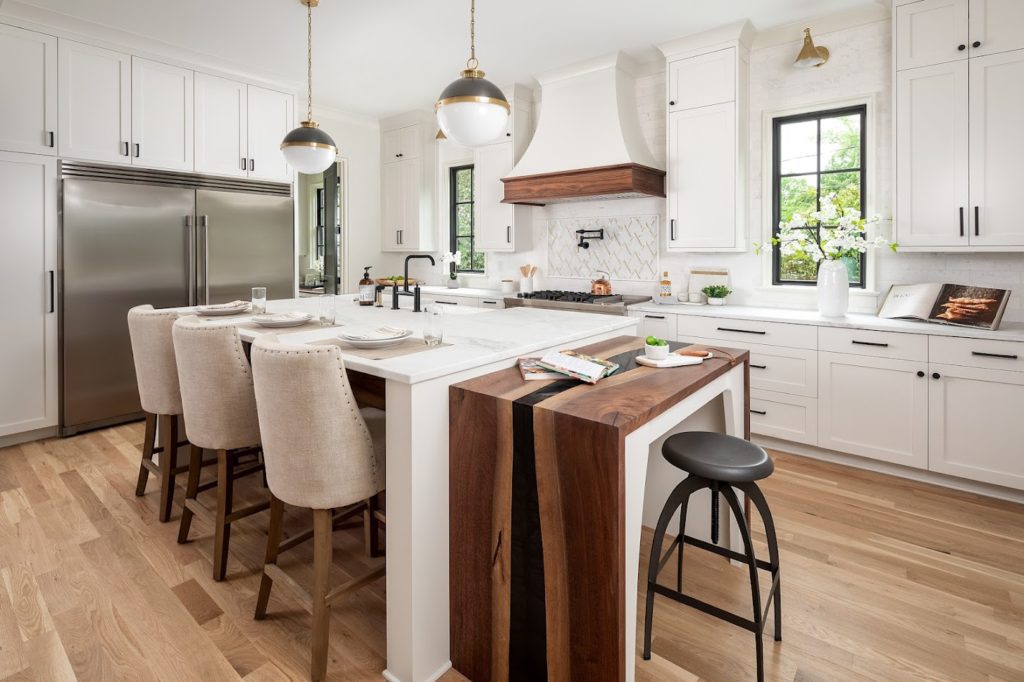Wood countertops bring warmth, character, and a unique aesthetic to any kitchen.
With proper care, these natural masterpieces can last a lifetime. In this guide, we’ll cover how to maintain, repair, and compare wood countertops to other popular materials.
Choosing Wood Countertops Has Long-Term Benefits
The Aesthetic of Wood
Wood offers a timeless beauty that is hard to replicate. Its natural grain, color variations, and depth add an organic touch to your kitchen.
Functional Benefits
Beyond aesthetics, wood countertops are easy on your knives and resilient to wear when properly cared for.
Hardwoods in Our Shop
We specialize in several types of hardwoods, each with unique properties. This variety ensures there’s a wood countertop for every taste and requirement.
Basic Care and Maintenance for Wood Countertops
Daily Cleaning
Avoid abrasive cleaners which can damage your countertop’s finish.
Instead, use mild soap and water for daily cleaning. Wipe the surface dry after cleaning to prevent water stains and warping.
Periodic Maintenance
Oiling your countertop regularly (about once a month) maintains its luster and prevents it from drying out.
Use food-grade mineral oil or a specially designed butcher block oil for best results.
Long-Term Maintenance
Every few years, it might be necessary to sand the countertop surface to remove any deeper scratches or soaked-in stains.
After sanding, apply a generous coat of oil to restore its finish.
Sealing and Resealing Your Wood Countertop
Importance of Sealing
Sealing is crucial for preventing water damage and stains on your wood countertop. A well-sealed countertop is also easier to clean.
Sealing Process
Apply a layer of sealer evenly over the countertop and allow it to penetrate the wood. After it dries, apply a second coat for extra protection.
Re-sealing Your Countertop
Over time, the sealer may wear off. You’ll know it’s time to re-seal when water no longer beads up on the surface.
Fixing Minor Repairs on Your Woodtops
Identifying Minor Damages
Small scratches, dents, or light stains can be fixed at home with some simple steps.
Deeper scratches, large grooves or heavy staining may require more professional attention.
Repairing Minor Damage
For minor scratches or dents, sand the area gently until the damage is gone. Then, reapply oil to the sanded area.
DIY Repair Precautions
Always sand along the grain of the wood and avoid pressing down too hard to prevent further damage.
Wood Countertops Vs Other Materials
While granite, marble, and quartz have their advantages, wood countertops provide a warm, organic aesthetic that these materials can’t match.
Choosing wood countertops can also be an environmentally friendly choice as wood is a renewable resource.
With proper care, your wood countertop can remain a beautiful centerpiece in your kitchen for years to come.
Should you have any further questions or require professional assistance, don’t hesitate to get in touch with us.









